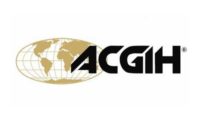Not surprising, most of us spend most of our time indoors. Most of us aren’t farmers or construction workers. We are the indoor generation. The EPA’s National Human Activity Pattern Survey (NHAPS) conducted 1992-1994 found that Americans spend about 87% of their time in enclosed buildings and about 6% of their time in enclosed vehicles.
A May 2018 global study funded by Velux1 found that people, including those in the U.S., believe they spend around two-thirds of their time indoors. The study found most people may spend as little as 15 minutes outdoors each day; with one in six people practically never going outside.
Many conditions indoors, such as artificial lighting, may impact one’s health, safety and comfort. The most important condition is likely quality of the indoor air. Enclosures concentrate chemicals and other e.g. microbiological airborne hazards. The type and dose of chemicals -- how much is inhaled over time — helps to determine adverse health risk. About 70% of people’s time is spent in a residence, per NHAPS. Bottom line: home indoor air quality (IAQ) should be of paramount importance.
Risk assessments
Most homes in the U.S. have monitors to measure alert levels of odorless carbon monoxide, But homes are rarely measured for the range of chemicals below odor thresholds that may be present. For example, what’s the level of formaldehyde in your home? Most people, even OHS pros, may likely answer “none” as part of their subjective risk assessment.
Formaldehyde, however, is an endogenous compound produced as a metabolic byproduct by all living organisms2. Your home IAQ contains formaldehyde and many other chemicals, but most people don’t know the measured amount. And homes include people of all ages and health, so IAQ limits must address the most vulnerable people.
IH skills are often necessary to collect and analyze chemicals at the parts per billion (ppb) level and in ug/m3 ranges. Field instruments can rarely achieve the accuracy and chemical specificity needed here. Accredited laboratories are needed.
The scientific validity of IAQ limits is questionable. One-tenth a TLV® lacks scientific rationale. AIHA experts concluded in March, 2017 for IAQ that there is “no toxicological basis for a TVOC (total volatile organic compounds) limit of 500 ug/m3”3. The Green Building Council’s Leadership in Energy and Engineering Design (LEED’s) 27 ppb formaldehyde limit may not withstand scientific scrutiny that establishes a conservative health-based IAQ limit for formaldehyde at 100 ppb2.
HazCom
Workers exposed to chemicals receive OSHA HazCom training. The typical home-owner may not understand scientific health-based terms. Five parts per million of chemical may sound a lot safer than 100 ppb for the same chemical. Shouldn’t the typical American home-owner have chemical units expressed in English rather than the metric micrograms per cubic meter, for example?
Ventilation
Understanding ventilation is another challenge. More than 75% of U.S. homes use air conditioning and 90% of homes have central air. Chemicals concentrate indoors. The adage “the answer to pollution is dilution” — open a window to introduce “fresh” air — makes sense, but generally is only done in air-conditioned homes when outdoor temperature, humidity and other conditions such as noise and security are subjectively comfortable. The adage for energy conservation to “build tight, ventilate right” may challenge IAQ chemical dilution.
Cost
Cost is hands down the greatest challenge for a home-owner to accurately know the amount of chemicals floating in the home air, and whether this amount is safe. They usually pay a service believing that home IAQ is making them sick, which often it is not.
I recently provided an onsite subjective opinion to a homeowner’s lawyer that home air was safe. The homeowners, however, wanted a definitive answer in a written report from a CIH. After accounting for labor, lab fees for select chemicals and other expenses such next-day air (media had to be kept cold) for laboratory analysis, the charge came to $2,500.
I am not aware of any public service such as a local or state health department that conducts IAQ assessments at private homes.
Consult?
Information from organizations such as the EPA make the public aware of the need for IAQ assessments4. The need is there.
OHS pros may be asked to help family, friends or others and lend their expertise help to solve a home IAQ problem. Unless you’re in the consulting business, rarely will this short-term service be a conflict of interest to your employer.
Many OHS pros have skills necessary to identify home IAQ chemicals of concern and collect them. Labs do their magic with analysis. Interpretation and explanation of results, however, is often a complex matter that frustrates the pro and home-owner alike.
An awareness of psychosomatic issues and attempts to match a host of reported health symptoms usually accompany home IAQ assessments. Whatever you conclude with a home IAQ assessment may be readily debated by other actual and self-professed experts. Family and friends may expect free service. Many homeowners are hesitant pay necessary analytical lab fees that may become high is not well managed.
For these and other reasons, I rarely accept home IAQ projects. Short advice is fine, but a thorough assessment may be a rabbit hole you should be reluctant to go down. Before helping others, provide a thorough assessment of your home’s IAQ.
References:




